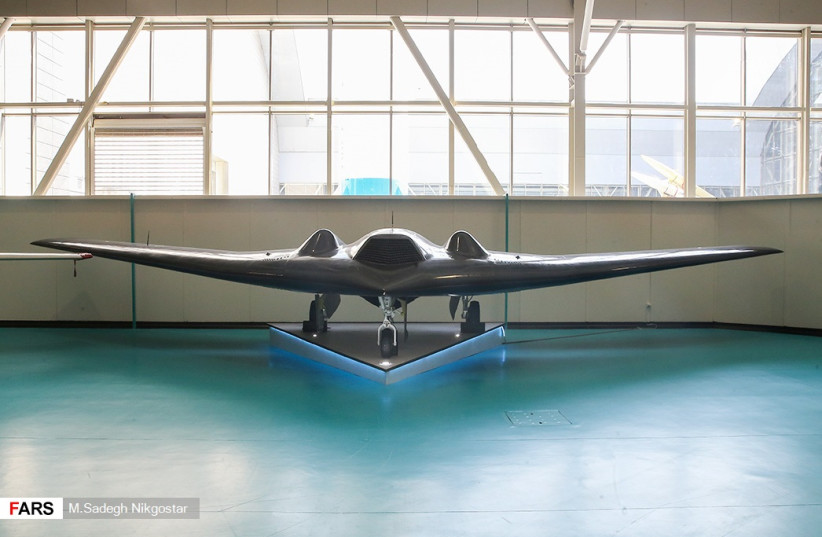Iran has “tripled” its defense exports, according to Iranian pro-regime media on Friday.
The report in Iran came as a separate report at The Washington Post claimed that Russia is seeking to mass produce Iranian drones. The US and the West want Russia to stop using the Iranian Shahed 136 kamikaze drones which Russia has relied on over the last year and a half of war to terrorize Ukrainian civilians. The drone can strike targets with some precision more than 1,000 miles from its launch site.
Iran’s goal today is to become a defense powerhouse in the region. The Iranian defense ministry’s remarks come as Iran is also doing outreach to Saudi Arabia. According to reports Iran’s deputy defense minister Reza Talaei-Nik provided insights on Friday into Iran’s export of weapons.
"Defense is relevant in all times and history and for all people, and everyone should have the possibility of defense,” he said, noting that in the last 200 years, Iran has suffered invasions and been forced to cede territory when its defenses were weak. For this reason the regime has plowed resources into developing defense products locally.
This primarily means the development of missiles and drones as Iran doesn’t have the capacity to build hi-tech airplanes to compete with western 5th generation fighters, like the F-35, so Iran builds the kinds of weapons that give it more bang for the buck.

The official said, according to the Tasnim News account, that Iran is today at the height of its power in terms of investment in defense.
“Westerners say that the 21st century is the Asian century and the center of Asia's developments is the Middle East, and this is the heart of the world, and one of the Western theorists who is the editor of a reputable publication says Iran the is the winner of developments in the Middle East region,” he claimed, without noting the source for these claims.
Iran’s regime has invested in industrial capacity to produce drones, missiles and other weapons, including air defenses. This is in contrast to Iran before 1979 when it relied on western defense imports. The Islamic regime re-tooled factories left behind by foreign corporations, such as Bell Helicopter, and has been able to produce new systems over the last decades. It has attempted to reverse engineer some drones and missiles and expanded the capabilities of ballistic missiles from Russia, China and North Korea.
“Before the revolution, we had 31 domestically produced military products, but now more than 80 defense systems are produced by the domestic defense industry, and each defense system has sub-systems,” the official claimed.
Iran is one of the top 10 countries in the world in the defense industry, the Iranian pro-regime media said.
Iran’s defense industries have also expanded into the civilian realm. Iran produced some 2,000 civilian products, the defense ministry in Tehran said.
“We have acquired 2,000 civilian products in the fields of automotive, rescue, medical, laser, space, pharmaceutical, biological, energy, mining, nano, engineering and cyber industry, and we are ready to use them,” he said.
How do civilian products help Iran's defense industry?
This means that Iran can move money it receives from sanctions relief directly into its defense industry under the guise of supporting civilian products.
Meanwhile, recent controversies point to Iran receiving billions after agreeing to release hostages and prisoners to the US. Iran is supposed to receive some six billion dollars in unfrozen funds and this is supposed to go toward humanitarian purposes. But what happens when Iran’s defense industry openly says it wants more involvement in civilian industries and when the IRGC claims to do “humanitarian” work like flood relief? Iran’s own defense ministry says that it wants to combine soft and hard power and combine advanced technologies to meet its needs.
Iran is also saying it wants to invest more in drones, air defenses and missiles that can avoid radar. The Iranian deputy defense minister pointed to the “Qasim, Imad ballistic missiles and other types of missiles that are produced as a family and can operate with more capabilities…We are moving towards the production of hypersonic cruise missiles and this initiative is very new and will increase our operational and defense power.”
The US has encouraged Iran to stop selling drones to Russia, but reports from Iran indicate that Iran is instead seeking to increase exports, not only to Russia, but around the region and globally. By expanding the defense industry in Iran, the recent report shows that increased defense exports can fuel the defense industry’s power in Iran and its ability to acquire more civilian industries and repurpose them to do things like import dual use engines and products that can be used on drones. In the past Iran has imported items from the West and China to increase its capabilities in drone warfare.
